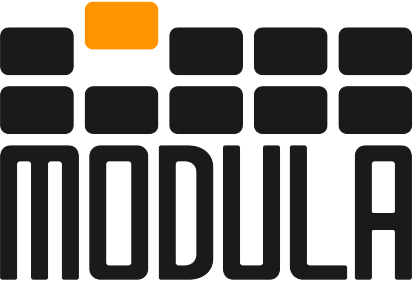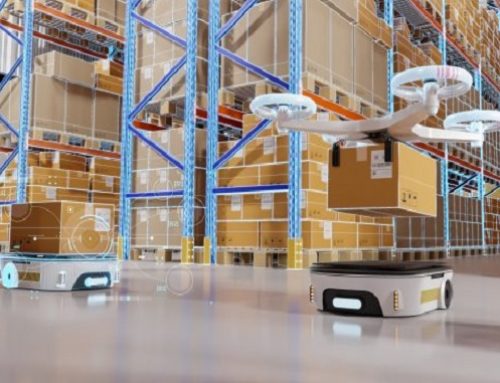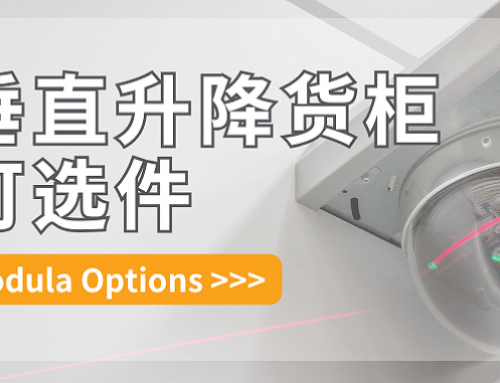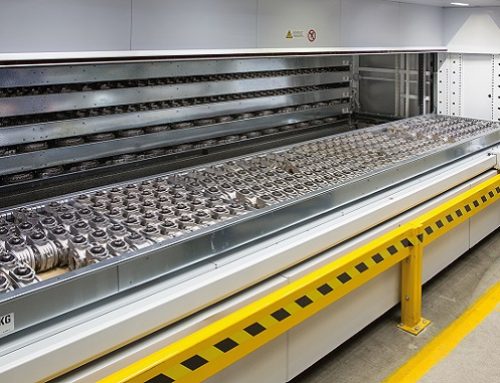
Did you know that obsolete inventory can hurt your business and impact your cash flow?
It’s essential to sell the products you acquire to achieve profit and cover your warehouse costs. This is where the importance of the inventory turnover ratio comes into play.
We’ll demonstrate how to compute your inventory turnover, explain what constitutes a favorable inventory turnover ratio, explore expert tips to enhance your turnover rate, and share industry-leading warehouse solutions from Modula APAC that can help.
What Is Inventory Turnover?
Inventory turnover refers to how quickly a company sells its stock after purchase. It can help your business improve your cash flow and operational efficiency.
What Is Inventory Turnover Ratio?
The inventory turnover ratio measures the rate at which stock is sold, used, and replenished.
The turnover ratio is calculated through a mathematical formula, where the cost of goods sold is divided by the average inventory for the same period. A higher rate is more favorable, as it usually indicates strong sales.
How To Calculate Inventory Turnover Ratio
Inventory turnover ratios are generally calculated over one fiscal year, although this can vary depending on the business.
Here’s a step-by-step guide to calculate your inventory turnover ratio:
1.Add the beginning and ending inventory for the period, then divide by two:
Average Inventory = (Beginning Inventory + Ending Inventory) / 2
If your business experiences no seasonal fluctuations, you can use ending inventory instead. For more accuracy, especially with seasonal variations, calculate the annual average by dividing monthly inventory totals by 12.
2.Apply the inventory turnover formula
Inventory Turnover Ratio = Cost of Goods Sold (COGS) / Average Inventory
Inventory Turnover Ratio Example
A boutique retailer specialising in handcrafted pendant lights experienced its busiest period during Q4.
The company reported $60,000 in COGS and $20,000 in average inventory for the quarter. To calculate the inventory turnover ratio, divide $60,000 by $20,000:
Inventory Turnover Ratio = $60,000 ÷ $20,000 = 3
Calculating the Average Inventory Period
Using the same scenario, we can calculate the average inventory period — the time it takes to sell the current inventory. With an inventory turnover ratio of 3, divide 365 days by 3:
Average Inventory Period = 365 ÷ 3 = 121.67 days
This means the boutique retailer takes approximately 122 days to sell its current inventory at the existing turnover rate.

Higher vs. Lower Inventory Turnover Ratios
A high inventory turnover ratio indicates strong market demand for the company’s products and frequent inventory replenishment.
On the other hand, a low inventory turnover ratio suggests weak market demand and excess inventory (overstocking). Unsold inventory may eventually require a write-down to reflect its reduced value on the balance sheet.
What Is a Good Inventory Turnover Rate?
Typically, an inventory turnover ratio between five and 10 indicates a well-balanced inventory, suitable for sales and restocking.
For example, if your company’s turnover ratio is one, it means you sold 100 items and had 100 in stock during the period. On the other hand, selling 500 items with 100 left in stock results in a turnover ratio of five.
Why Should You Understand Your Inventory Turnover?
Inventory turnover is crucial, as it measures how efficiently a company manages its stock.
1.Drive Profitability
Understanding inventory turnover is a direct path to higher profitability.
As a critical key performance indicator (KPI), it plays a pivotal role in driving retail growth. Higher inventory turnover reduces holding costs and allows businesses to adapt more quickly to changing customer demands — a win-win for retailers.
2.Maximise Operational Efficiency
Operational efficiency significantly improves with regular inventory turnover assessments. These assessments can help your business refine your purchasing strategies, ensuring optimal stock levels without overinvestment in slow-moving items.
Knowing your inventory turnover can also help you prevent costs associated with excess stock, such as storage fees and depreciation, and minimise the risk of stockouts that could lead to lost sales.
3.Make Smarter Decisions
Understanding inventory turnover can help you make smarter, more informed decisions.
It allows you to identify which items need restocking, highlights underperforming products, and guides strategies like price adjustments or discounts.
You can also predict demand more accurately, enabling proactive manufacturing and production planning.
How To Increase Your Inventory Turnover
With a clear understanding of your inventory turnover, here are methods to enhance your turnover:
1.Promote Surplus Stock Sales
Low-demand stock can burden your business, as it ties up capital that could otherwise be used for more profitable, fast-moving items.
Actively implement special discounts and promotions to clear out your surplus stock. For example, consider launching a targeted marketing campaign specifically designed to attract buyers interested in clearance sales.
Use digital marketing tools such as social media ads, email newsletters, and exclusive online deals to reach a broader audience and drive urgent sales.
2.Motivate Your Customers to Place Advance Orders
Encouraging your customers to pre-order specific products guarantees confirmed sales, enhancing your inventory turnover.
To give your customers that extra incentive to place advance orders, create anticipation and exclusivity by offering early access to new products, limited-time discounts, special bonuses, and exclusive sneak peeks.
Clearly communicate the pre-order timeline and provide regular updates to build trust. This also makes your customers feel they’re getting a special deal by pre-ordering before the product is widely available.
3.Perform Demand Forecasting
Demand forecasting enables you to predict which products will be in high demand, allowing you to adjust your inventory levels accordingly.
For example, if you anticipate a surge in demand for festive food and flowers during the Lunar New Year, you can increase your stock to meet the expected rise in sales.
4.Restock Efficiently
If an item sells quickly, avoid buying large quantities to prevent overstocking.
Instead, store smaller quantities more frequently. This approach ensures you order new stock before the current supply sells out, keeping your business running smoothly and reducing excess inventory.
Additionally, ordering more frequently may help you secure better rates from suppliers.
5.Speed Up Shipping
For online businesses, fast and reliable shipping is paramount to boosting sales. If customers face long waits or receive damaged products, they’re unlikely to return or may leave negative feedback that may discourage future buyers.
When you accelerate your shipping process, you can streamline your inventory turnover and guarantee that products reach customers promptly.
6.Utilise Different Pricing Strategies
Pricing can be complex, particularly when you’re managing a diverse range of products on a global scale. A one-size-fits-all pricing strategy is often ineffective. Instead, adapt each strategy to suit varying product demands, market conditions, and consumer expectations.
Implement seasonal pricing during peak periods, offer free shipping to boost competitiveness, and provide discounts for bulk purchases to encourage larger orders.
7.Implement Automation
Automation, particularly through a warehouse management system (WMS), can significantly reinforce your inventory turnover by optimising various aspects of warehouse operations.
With real-time tracking capabilities, a WMS provides precise data on inventory levels, locations, and movements within the warehouse. This level of accuracy prevents overstocking and understocking by ensuring inventory levels are based on current demand and sales forecasts.
Advanced WMS also incorporates analytics tools that help predict future inventory needs based on historical sales data, trends, and seasonal fluctuations.

Improve Your Inventory Turnover With Modula APAC’s Vertical Lift Modules
On top of our advanced warehouse management system, Modula APAC offers three types of vertical lift modules (VLMs) that can help significantly boost your inventory turnover:
- Space Optimisation:VLMs make the most of your facility’s vertical space to reduce storage footprint and help you increase stock rotation and turnover.
- Experience Picking Efficiency:VLMs deliver items directly to operators at an ergonomic height, speeding up the picking process, reducing errors, and enhancing overall efficiency.
- Better Inventory Control:Integrated inventory management software in VLMs tracks inventory transactions in real-time, manages stock levels accurately, and sends restocking alerts to help maintain ideal inventory levels.
- Reduced Labor Costs:VLMs automate storage and retrieval processes, cutting labor costs and allowing staff redeployment to more productive tasks, such as quality control and checks.
- Optimal Security:VLMs can include secure access controls to prevent unauthorised access and minimise handling, reducing potential theft and damage.
- Scalability and Flexibility:Reconfigure or expand VLMs as your business grows, supporting scalable operations without significant new space investment.
Choose from three VLMs to revamp your warehouse operations:
- Modula LIFT:Modula Lift serves as the ideal automated warehouse solution for products, components, and spare parts across all environments and sectors. It delivers a maximum throughput of up to 120 trays per hour, with each tray supporting a payload of up to 990 kg.
- Modula NEXT:Modula NEXT represents our latest generation lift module, offering unparalleled safety management for automated retrieval in the warehouse. It includes a custom-designed bay that opens exclusively at a designated compartment for picking.
- Modula SLIM:Modula SLIM employs the same sophisticated storage technology as the Modula Lift model and offers the same advantages for clients. It enhances productivity, ensures picking accuracy, and streamlines inventory management in a more compact area.
Reach out to discover how our technology can elevate your operations and empower your team. Our experts are ready to provide tailored advice and solutions that specifically cater to your unique warehouse needs.








